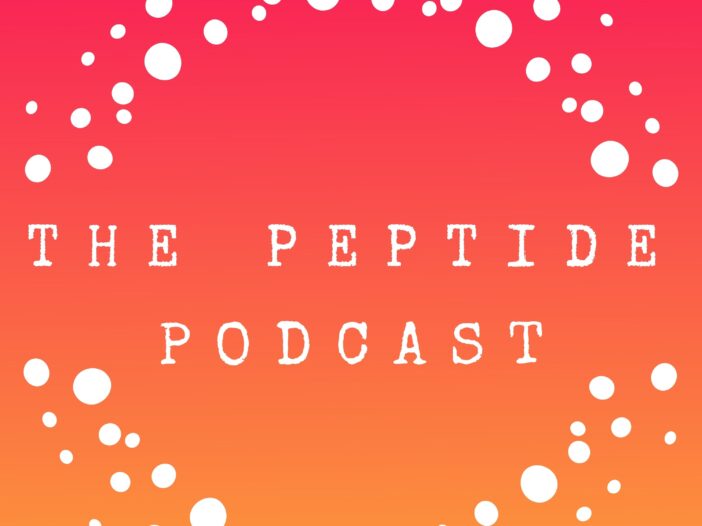
Myocardial infarction (MI), commonly known as a heart attack, is a serious medical condition that always requires comprehensive and targeted care to facilitate optimal recovery. In recent years, medical science has made significant strides in the development of innovative therapies, including peptide therapy.
Among these, GLP-1 agonists (glucagon-like peptide-1 agonists) have emerged as a promising avenue for post-MI care. In this podcast, we’ll talk about the important role of GLP-1 agonists in the context of post-MI management and how these peptides are revolutionizing cardiovascular treatment strategies.
What are GLP-1 Agonists?
GLP-1 agonists are a class of medications initially designed to manage type 2 diabetes. They mimic the action of glucagon-like peptide-1, a natural hormone that regulates blood sugar levels. In recent years, researchers have discovered that these agonists offer benefits that extend beyond glycemic control. They have been shown to suppress appetite aiding in significant weight loss and have shown remarkable cardioprotective properties, making them valuable therapeutic options, especially in the post-MI period.
What are the cardioprotective effects of GLP-1 Agonist?
- Improving Cardiac Function: GLP-1 agonists have been found to enhance cardiac function by improving the heart’s pumping ability and reducing the workload on the cardiovascular system. This effect is particularly helpful after a heart attack when the heart muscle needs support to recover and function efficiently. It is also helpful for those who have heart failure.
- Reducing Inflammation: Inflammation plays a big role in the progression of heart damage after a heart attack. GLP-1 agonists have anti-inflammatory properties, reducing inflammation within the cardiovascular system. By mitigating inflammation, these medications aid in preventing further damage to the heart tissue, helping the healing process.
- Promoting Vasodilation: GLP-1 agonists promote vasodilation, which means they relax blood vessels, reducing blood pressure and improving blood flow. This effect is vital post-heart attack as it helps reduce the strain on the heart and prevents complications related to high blood pressure.
- Mitigating Oxidative Stress: Oxidative stress is caused by an imbalance between free radicals and antioxidants in the body. This can exacerbate heart damage post-heart attack. GLP-1 agonists have antioxidant properties, helping prevent ischemia and reperfusion injury. This is important for many reasons. Ischemia occurs when the blood supply to a specific part of the body is reduced or completely blocked, leading to oxygen and nutrient deprivation. Reperfusion injury, on the other hand, happens when the blood supply is restored after a period of ischemia. Surprisingly, the reintroduction of oxygen-rich blood can exacerbate tissue damage due to the production of free radicals and inflammatory responses, leading to further cellular injury and dysfunction.
- Anti-atherosclerotic: Atherosclerosis is a condition where these plaques build up, narrowing the arteries and restricting blood flow. This narrowing can lead to various cardiovascular problems, including heart attacks and strokes. GLP-1 agonists help reduce the overall amount of plaque on the inner walls of the heart’s arteries, decreasing the risk of heart attack or stroke.
Individualizing Treatment in Post-MI Care:
It’s important to note that the use of GLP-1 agonists in post-MI care should be individualized. Healthcare providers carefully assess patients’ overall health, existing conditions, and medical history to determine the safety of these medications.
And remember, while GLP-1 agonists offer significant benefits, they are just one component of a comprehensive post-MI treatment plan. Lifestyle modifications, such as a heart-healthy diet, regular exercise, and smoking cessation, are equally vital in ensuring a holistic approach to recovery.
When you have a heart attack, you’ll need immediate emergency medical care and procedures to help stabilize and save your heart. Typical medications used in the hospital are oxygen, pain relievers like nitroglycerin and morphine, blood thinners like heparin to stop clots from forming, beta-blockers like metoprolol to help reduce how hard your heart is working, cholesterol medications like Lipitor (statin) to help prevent further plaque build-up and ACE-inhibitors like lisinopril to help lower your blood pressure.
Once your heart attack has passed, you’ll likely need long-term medications to help prevent you from having another heart attack. These include medications like blood thinners, blood pressure medications, beta-blockers, and cholesterol medications.
In some cases, your healthcare provider might prescribe a GLP-1 agonist like semaglutide or liraglutide. If you’ve been prescribed semaglutide or liraglutide, you’ll start at a low dose to help your body get used to the medication and avoid stomach-related side effects like nausea, diarrhea, and constipation. Semaglutide will be dosed once weekly and liraglutide will be dosed daily.
Thanks again for listening to The Peptide Podcast, we love having you as part of our community. If you love this podcast, please share it with your friends and family on social media, and have a happy, healthy week!
Pro Tips
We’re huge advocates of using daily greens in your routine to help with gut, skin, nail, bone, and joint health. We take AG1 (athletic greens) every day. Not only does it have vitamins, minerals, and a diverse range of whole-food sourced ingredients, but it also has probiotics to promote a healthy gut microbiome and adaptogens to help with focus and mood balance. It’s vegan, paleo, and keto-friendly.
Leave a Reply